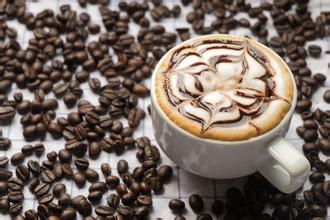Colombian raw and cooked coffee beans Colombian Lazmus manor coffee beans
Two: according to the size of the bean body
Maragogype Malagori bark, a special tree species, has a large bean body and a low total yield.
Supremo super grade, no more than 5% of the beans less than 17 mesh but more than 14 mesh in the sample
Supremo screen18+ 18 + super grade, no more than 5% of beans less than 18 mesh but more than 14 mesh in the sample
Excelso Extra is top grade, and the bean body in the sample is less than 16 mesh but not more than 5% above 14 mesh.
Excelso EP is of top grade, with less than 2.5% of beans less than 15 mesh but more than 12 mesh in the sample (this proportion may also be adjusted to 5% or 8% depending on demand)
U.G.Q. General "Usual Good Quality": no more than 1.5% of beans less than 14 mesh but less than 12 mesh in the sample
Three: high-quality coffee beans according to the defect rate
The number of defective beans allowed per 500g sample:
Private raw bean exporter: 72defects
National Coffee Committee: 42defects
There are two kinds of defective beans:
The first one: it's called a first-class defect.
The second kind is called secondary defect.
First: major defects (defects that affect the taste characteristics of coffee): black beans, moldy beans or sour beans
Private raw bean exporters: no more than 12 first-class defective beans
National Coffee Committee: no more than 8 first-class defective beans
Second: secondary defects (defects that affect the appearance of raw beans):
Discolored beans (old beans, over-dried beans, soybeans), broken beans, insect bite beans, shell beans, unripe beans, special-shaped beans
Private raw bean exporters: no more than 60 minor defective beans
National Coffee Committee: no more than 35 secondary defective beans
Note: the number of major defective beans can be replaced by the number of secondary defective beans, and one primary defective bean is equivalent to 10 secondary defective beans.
Boutique coffee
The number of primary defective beans in Grade AA per 500g coffee is zero and the number of secondary defective beans is less than 5.
Grade A has less than 3 primary defective beans and less than 8 secondary defective beans per 500g coffee.
There are less than 8 primary defective beans and less than 35 secondary defective beans per 500g coffee in Grade.
Four: according to the region
Traditionally, Colombian coffee is often called the Armenian / Medellin Gourmet.
A few years ago, coffee began to be sold under the name of region: Popayan, Bucaramanga, Huila, Tolima, Medellin, Nari ñ o became the main coffee producing areas.
There are two distinct coffee production periods in Colombia: Main crop (main season), and (second season) and Mitaca (second season). These two production periods will be different in different regions.
For example, the harvest time of the main season
Bucaramanga10-December
Popayan5- June
The quality of coffee produced in the main season is usually better than that in the next season.
The above four grading methods of coffee beans can also be used in the classification of coffee beans in other countries, but different regions and different countries have their own requirements for the quality of coffee beans, but those who can be promoted to high-quality coffee are very good coffee. if you have a chance, be sure to try boutique coffee.

Important Notice :
前街咖啡 FrontStreet Coffee has moved to new addredd:
FrontStreet Coffee Address: 315,Donghua East Road,GuangZhou
Tel:020 38364473
- Prev

Common Fine Coffee Beans (Single Coffee) Knowledge Mantenin Colombia Coffee Beans
Single coffee is coffee made from coffee beans produced in the country of origin, generally pure coffee without milk or sugar. For example, the famous Blue Mountain Coffee, Brazilian Coffee, Italian Coffee and Colombia Coffee are all named after the place where the coffee beans are produced. Mocha coffee and charcoal coffee are also single items, but their names are more special. Mocha is a port in Yemen,
- Next

Fine Coffee producing areas introduce the practice of Colombian Coffee how to make Colombian Coffee delicious
Coffee from Colombia is one of the few individual coffees sold in the world under the name of the country. In terms of quality, it has won praise unmatched by other coffee. Compared with other producing countries, Colombia is more concerned with developing products and promoting production. It is this, coupled with its superior geographical and climatic conditions, that makes Colombian coffee excellent in quality and delicious and famous all over the world.
Related
- Does Rose Summer choose Blue, Green or Red? Detailed explanation of Rose Summer Coffee plots and Classification in Panamanian Jade Manor
- What is the difference between the origin, producing area, processing plant, cooperative and manor of coffee beans?
- How fine does the espresso powder fit? how to grind the espresso?
- Sca coffee roasting degree color card coffee roasting degree 8 roasting color values what do you mean?
- The practice of lattes: how to make lattes at home
- Introduction to Indonesian Fine Coffee beans-- Java Coffee producing area of Indonesian Arabica Coffee
- How much will the flavor of light and medium roasted rose summer be expressed? What baking level is rose summer suitable for?
- Introduction to the characteristics of washing, sun-drying or wet-planing coffee commonly used in Mantenin, Indonesia
- Price characteristics of Arabica Coffee Bean Starbucks introduction to Manning Coffee Bean Taste producing area Variety Manor
- What is the authentic Yega flavor? What are the flavor characteristics of the really excellent Yejasuffi coffee beans?

